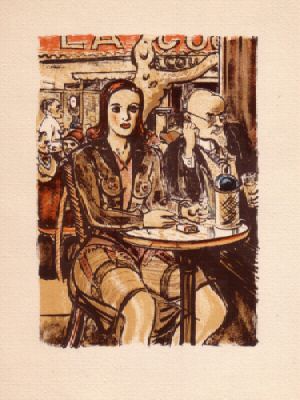Soft bigotry
This bit about David Brooks and his little racist assertion about the middle class (apparently only white people can be middle class) hilights a point about racism that interest me. The fact is that of course that there is no reason to believe that David Brooks is a racist. Mr. Brooks' slip of the pen was almost certainly benign.
Instead of real hardcore bigotry, what happened here was the simple confusion of the ideal for the real. This happens all the time, to everyone of us (EVERY one). Admittedly, the image I get in my mind when I think "American middle class" is of a white family. Odds are you do too, even if you are not white. This is a common phenomenon where dominant groups having the social power to define the boundaries of groups in a heterogenous society invariably define themselves as the archetypal mold in which all others are cast. (Even if that dominant racial or ethnic group doesn't comprise a majority). It helps that media representation reinforces this perception. It also helps that of racial/socio-economic class groups, the largest plurality is the white middle-class. So Brooks innocently defined the middle class as white for two reasons. 1) He thinks of the middle class that way, along with everyone else; 2) He's a very sloppy writer who came up with his conclusion and found the statistic that supported him by the largest margin: the white middle-class. If there was any bad intent it was partisan, not racial.
Here's where it gets sticky. This is the New York Times, which, despite recent troubles, one assumes is edited at least a little bit. Brooks' conclusion still holds for the middle class across races, it's not like it wouldn't have proven his point. Apparently he didn't even seem to check. Someone should have caught this. The fact that they didn't is a testimony to the darker side of soft bigotry. While it involves no actual malice, it does have real world consequences, people do think and act on this sort of bias. Even subtle shifts in behavior due to racial preference have real world consequences that can be just as pernicious as overt racism.
Instead of real hardcore bigotry, what happened here was the simple confusion of the ideal for the real. This happens all the time, to everyone of us (EVERY one). Admittedly, the image I get in my mind when I think "American middle class" is of a white family. Odds are you do too, even if you are not white. This is a common phenomenon where dominant groups having the social power to define the boundaries of groups in a heterogenous society invariably define themselves as the archetypal mold in which all others are cast. (Even if that dominant racial or ethnic group doesn't comprise a majority). It helps that media representation reinforces this perception. It also helps that of racial/socio-economic class groups, the largest plurality is the white middle-class. So Brooks innocently defined the middle class as white for two reasons. 1) He thinks of the middle class that way, along with everyone else; 2) He's a very sloppy writer who came up with his conclusion and found the statistic that supported him by the largest margin: the white middle-class. If there was any bad intent it was partisan, not racial.
Here's where it gets sticky. This is the New York Times, which, despite recent troubles, one assumes is edited at least a little bit. Brooks' conclusion still holds for the middle class across races, it's not like it wouldn't have proven his point. Apparently he didn't even seem to check. Someone should have caught this. The fact that they didn't is a testimony to the darker side of soft bigotry. While it involves no actual malice, it does have real world consequences, people do think and act on this sort of bias. Even subtle shifts in behavior due to racial preference have real world consequences that can be just as pernicious as overt racism.






0 Comments:
Post a Comment
<< Home